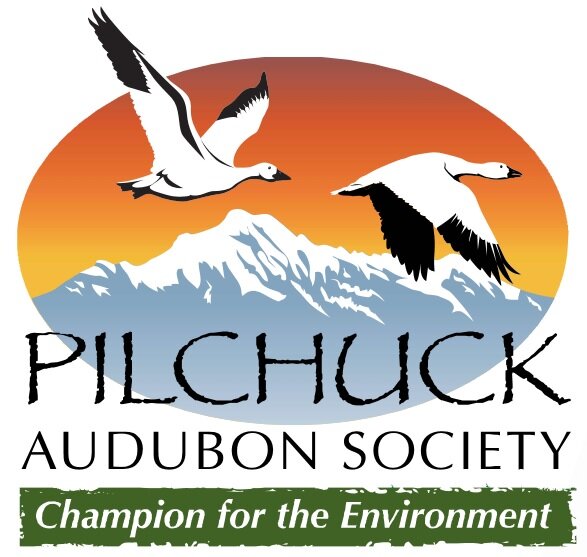Photo: Chestnut-backed Chickadee by Mick Thompson
November 7, 2021
By Jonathan Blubaugh
Pilchuck Audubon Society visited Renton’s Gene Coulon Memorial Beach Park on November 7th. After having found the park to be often crowded, I suggested we meet at the nearby Lowe’s. But this day it was not necessary maybe due to the early hour and chilly temperature. Some went on ahead to the park directly, and the rest of us followed them a few minutes later.
This was the first birdwalk I had led since the viral attack over a year ago. I organized no carpools in deference to public health guidelines. Our chapter now requires participants to be vaccinated, maintain social distancing, and sign an annual waiver.
We had eight people as we began at the swimming hole parking lot, which was basically empty to my surprise. In addition to some of the usual suspects (my best friends in the world) we welcomed a couple of newcomers to Weekend Birdwalks who were already members of the Pilchuck chapter. They found the trip announcement in our newsletter, the Profile, which can always be found on the Pilchuck Audubon website. The swimming hole parking lot started us out at the west end of the park at the very south tip of Lake Washington. That end of the park is next to a new Hyatt hotel and the Boeing Renton 737 factory where I work on the airfield preparing the aircraft for their first flights. It’s pretty much my sandbox.
Early on a Brown Creeper was spotted scurrying up a tree trunk and a big flock of American Robins was gorging on Mountain Ash berries. A couple of floating, anchored logs had almost three dozen Double-crested Cormorants, a few of them holding up their wings to dry. A Gadwall drake was whistling at one of several Gadwall hens. Mixed in with local, tame Mallards were three Mallard x domestic hybrids easily spotted by their blotchy white plumage.
From there we headed north along the southeast corner of Lake Washington State on ADA grade paved trails. A Peregrine Falcon (who nests just inside factory’s lakeside hanger doors) attacked the mighty Mallards, but missed. As I recall there was an adult and an immature Bald Eagle. When one of them glided down to perch on a post in the water the entire flock of gulls flushed, more than my count reflects. Continuing along the path we came across the resident Canada Goose flock, 65 strong. They are utterly tame, grazing and roosting on the grass right up to the edge of trail, not bothered in the least by the people walking or jogging by. They are really pretty up close! The ganders tend to stand sentinel duty whilst most of the flock grazes or snoozes.
It was absolutely wonderful to get back out with our old friends and new Pilchuck friends after the lengthy shutdown as you can easily understand, since we all experienced it.
We wanted to gather for lunch afterwards. Providently we found a café that was mostly empty, so our afternoon ended with good food, good friends, and God willing, a return to some type of normalcy.
Here’s a list of most of the birds that we saw: 65 Canada Geese, seven Gadwall, 30 Mallards plus 3 domestic hybrid ducks, three Ring-necked Ducks, a Bufflehead, nine Common Mergansers, a Western Grebe, two Anna’s Hummingbirds, a couple hundred American Coots, twelve Short-billed Gull (until this year known as Mew Gulls), a Ring-billed Gull, 33 Glaucous-winged Gulls, 35 Double-crested Cormorants, a Great Blue Heron, two Bald Eagles, heard a Norther Flicker, saw a Steller’s Jay, 19 American Crows, four Black-capped Chickadees, a Chestnut-backed Chickadee, a Ruby-crowned Kinglet, a Golden-crowned Kinglet, the Brown Creeper, a Bewick’s Wren, 25 American Robins, two House Sparrows, three Dark-eyed Juncos, a Song Sparrow, a Spotted Towhee, and the Peregrine Falcon. All were uploaded to the Cornell Lab of Ornithology via the eBird mobile application (https://ebird.org/checklist/S97258694).

